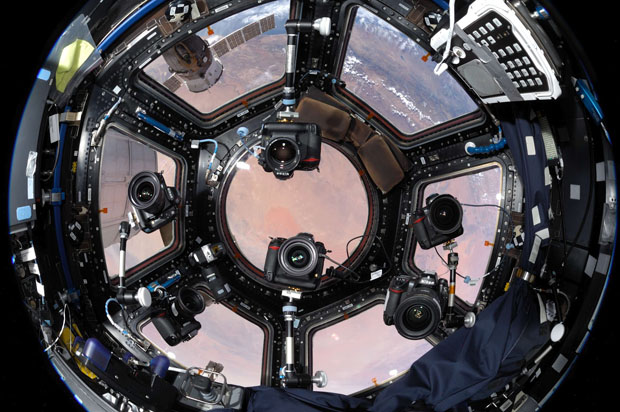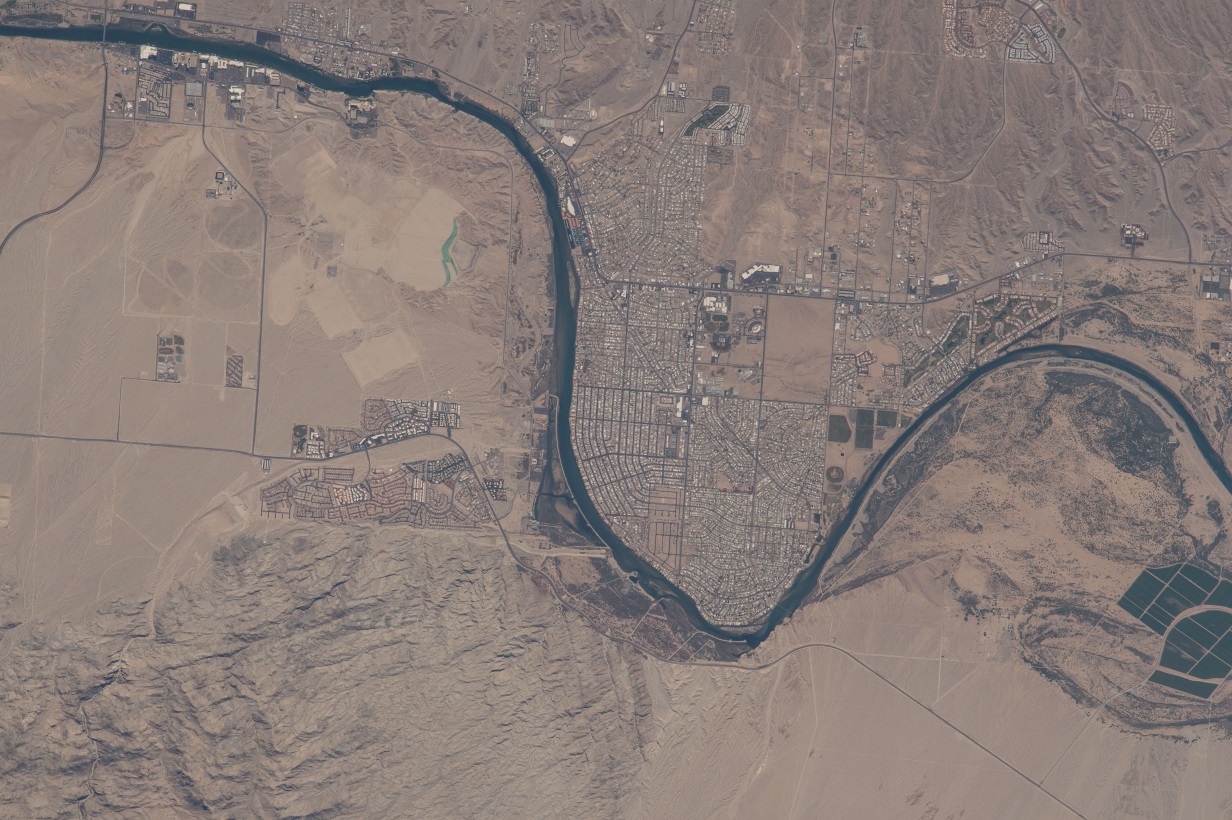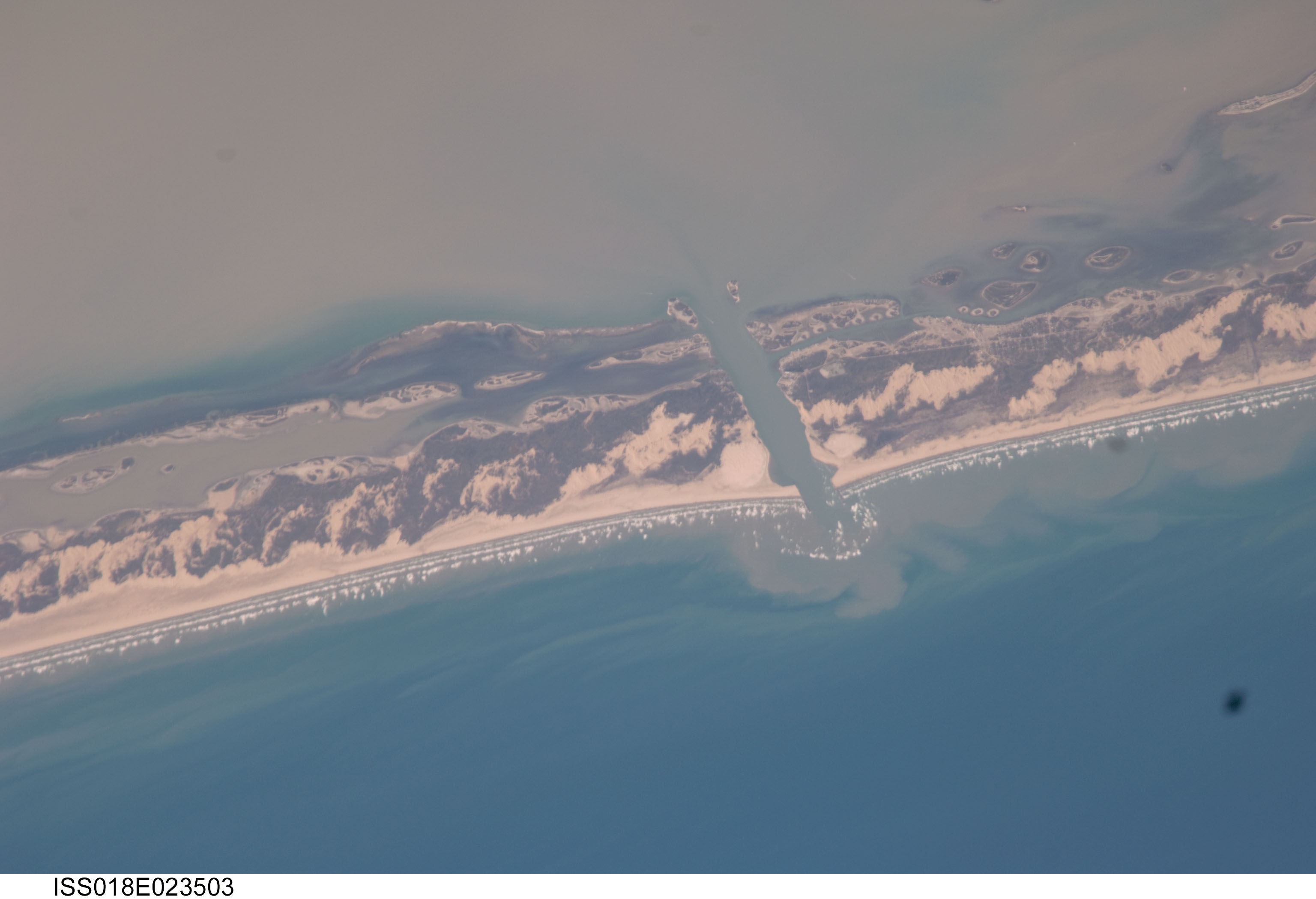This is a guest post from Amy Jagge, Image Data Scientist, and part of our Johnson Space Center (JSC) Image Detective Science Team
Over 2 million photographs acquired from astronauts on board the International Space Station are curated by the Earth Science and Remote Sensing Unit at NASA’s Johnson Space Center in a publicly available database accessible through The Gateway to Astronaut Photography of Earth website (eol.jsc.nasa.gov).

The cupola of the International Space Station – one of the astronauts’ favorite places to take photos. These are just some of the cameras they use. Credit: NASA
Searching through over 2 million photos can be a daunting task which is why NASA’s Astronaut Photography of Earth database uses an image’s center point location (latitude and longitude) to help scientists quickly search for photographs they need. There are many astronaut photos cataloged in NASA’s publicly available database that have center point locations, but there are many more that do not.
CosmoQuest is asking citizens scientists like you to identify the center point location of these astronaut photos, and help advance scientific research by aiding scientists locate the imagery they need to answer their scientific questions.The scientific contribution of citizen scientists using Image Detective 2.0 is crucial to improving the accessibility of astronaut photography. Listed below are four types of scientific research that will benefit from CosmoQuest’s Image Detectives:
1. Analyzing Land Use and Land Cover Change
Scientists can use astronaut photography to map and analyze land use and land cover change. This scientific data can be used city planners, earth scientists, ecologists, and climate scientists, among other disciplines and applications.

Figure 1. Astronaut Photograph (ISS047-E-121168, 05/16/2016, 1150mm) illustrating urban (image center) and undeveloped (image lower left) land uses in this urban area in the Midwest USA.
2. Monitoring Coastal Morphology
Astronaut photography, used together with other satellite and airborne datasets, provides a continuous record of scientific data for monitoring change on the Earth’s surface. For coastlines, astronaut photographs can provide a time-series of data for researching and monitoring coastal shoreline erosion, which is vital for sustainability planning and emergency management within communities at-risk to hurricanes.

Figure 2. Astronaut Photograph (ISS018-E-23503, 01/27/2009, 800mm) illustrating the coastal shoreline of a barrier island that provides coastal communities along the Gulf of Mexico protection from flooding caused by hurricanes.
3. Natural Water Resources
With the help of citizen scientists, images such as the one seen below will be more accessible to water resouce scientists managing, monitoring, and studying deltas worldwide.

Figure 3. Astronaut Photograph (ISS043-E-202122, 05/16/2015, 22mm) illustrating a river delta on a southeastern African island whose color indicates a change in soil erosion upstream.
4. Researching Surface Features on Earth as Analogs to Features on Mars
Astronaut photography of the Earth acquired from the International Space Station provides a publicly available resource to scientists for studying the morphology of Earth’s physical features. Researching these morphological characteristics helps scientists study the past and present environments of other terrestrial bodies. For example, exploring the morphological characteristics of dunes on Earth has helped scientists identify similar dunes on Mars.

Figure 4. Astronaut Photograph (ISS018-E-24007, 01/28/2009, 800mm) illustrating the morphology of sand dunes in arid southeastern Afghanistan.




 Join the Crew!
Join the Crew!
 Escape Velocity Space News
Escape Velocity Space News
0 Comments
Trackbacks/Pingbacks